THE PERFECT CUT

CTL – THE CUT-TO-LENGTH METHOD


CTL – THE CUT-TO-LENGTH METHOD
The popularity of the cut-to-length (CTL) method of harvesting is booming. Today, two thirds of the world’s mechanised industrial timber harvesting is done by CTL machinery. Nearly all new timber harvesting projects and tree plantations throughout the world are based on CTL solutions.
In the CTL method, timber is processed in the forest according to its intended use. The first unit in this two-machine operation is the agile CTL harvester that fells, delimbs, measures, optimises and cuts stems into assortments ordered by the client. The harvester is followed by a forwarder that transports each assortment to its pile on the roadside. From the roadside, each assortment is transported directly to its destination: logs to sawmills and pulpwood to pulp mills.
The automation system of an advanced CTL harvester maximises yield and minimises waste. These diverse machines are at home in challenging conditions and excel in all harvesting needs –regardless of the weather, season, or terrain.
The CTL method enables high-quality harvesting and forest management at all sites, ranging from thinning to regeneration felling. CTL is the best option for thinning and continuous cover forestry.

At Ponsse, we’ve worked together with our customers for the past 50 years developing the world’s best forest machinery. The world’s best forest machine – and the services that support it – is the most powerful, versatile and reliable option. It is a strong combination that enables sustainable forest management around the world.
Since our foundation in 1970, we’ve been guided by our respect for the environment and an ongoing strive towards sustainable development. That is why, for the past fifty years, we’ve dedicated ourselves exclusively to the manufacture, sale, service and development of efficient and environmentally friendly cut-to-length machines.
With this guide we wish to give you a better understanding of sustainable, high-quality CTL harvesting. After you finish reading the guide, you will see why we have trusted this method for half a century – and why we believe it is the technology of the future.

Juho Nummela, President and CEO, Ponsse Plc
PONSSE’S
Sustainable solutions for the benefit of our customers and the environment
Our customers succeed together with us
The preferred partner for responsible forestry
PONSSE’S VALUES
We truly care | We work for customers | We are honest | We are open for renewal
The rapidly growing CTL, cut-to-length method, has established its position as the global market leader in industrial timber harvesting. The key to the method’s success lies in machinery that is efficient, adaptable, environmentally friendly, and provides superior comfort for the user.

The CTL method is known as the Nordic harvesting method. Now, the method is rapidly growing in popularity around the world. Only two decades ago, CTL was still fairly unknown in many parts of the world. In recent years, this efficient and sustainable method has risen to the top and is now the global market leader in industrial timber harvesting.
Today, two thirds of the world’s mechanised industrial timber harvesting is done by CTL machinery. Within the EU, the CTL method is used for over 70 per cent of both mechanised and manual timber harvesting.
Nearly all new timber harvesting projects around the world are now based on CTL solutions.
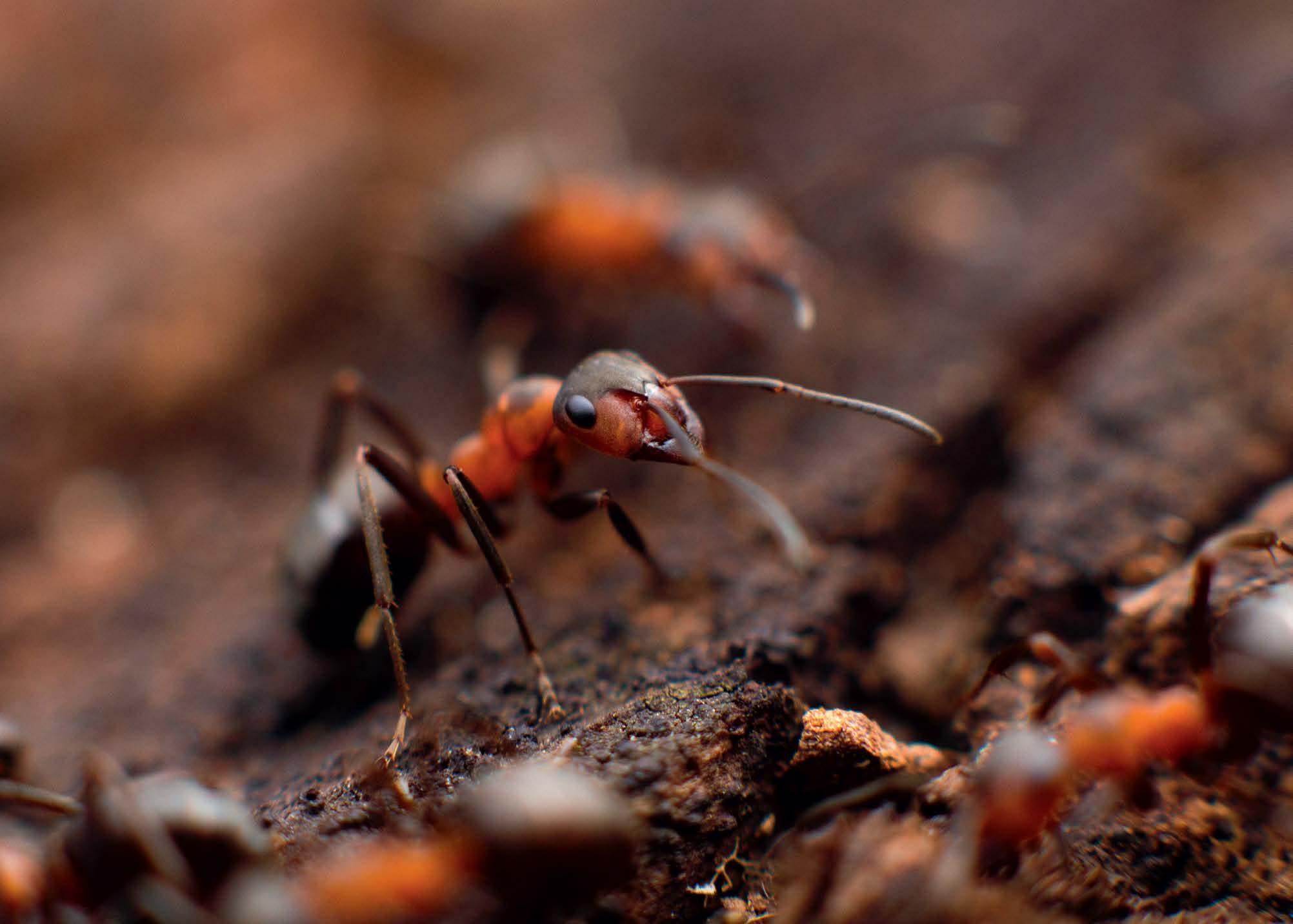
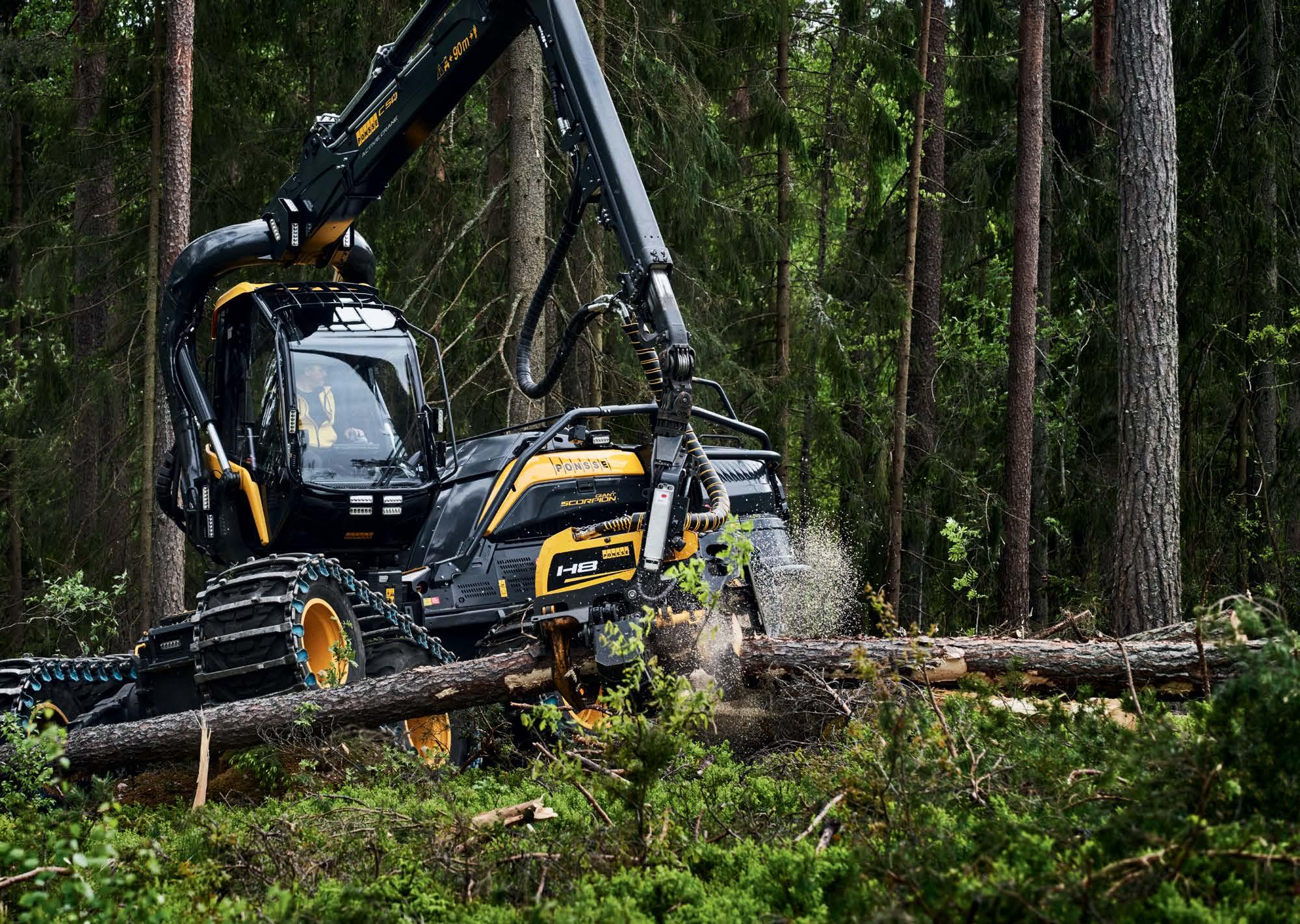
1. 2. 3.
In the CTL method, timber is cut into assortments in the forest according to their intended use. This allows a high value yield and an efficient logistical chain.
Assortments refer to the different types of logs cut from one felled stem. These can include saw logs, veneer logs, small-dimension logs, pulpwood, and wood for producing bioenergy. The harvester separates all the required assortments with the click of a button during felling. The assortments are based on the true needs of the end client.
The measuring instruments in a modern harvester guarantee that the cutting is precise, and the valuable raw material is used as efficiently as possible.
In the CTL method, the machine team consists of two units: a harvester and a forwarder. The harvester fells, delimbs, measures, optimises and cuts stems into assortments ordered by the client.
The forwarder transports each assortment to its pile on the roadside.
A logging truck then transports the logs to their relevant processing plants.
Where the CTL method is not yet used for mechanised timber harvesting, the tree-length method is the prevalent harvesting system.
In the tree-length method, the machine team consists of at least four units. First, a feller-buncher fells and bunches the stems. A skidder then pulls the felled stems to a roadside landing. At the landing, there are typically one or two processors to cut the stem into one or two assortments for transportation. There might also be a delimber, which removes the limbs from the stem to prepare it for transportation. stems that are too long are cut to the desired length by a slasher. A separate loader is often needed to load the stems.
In the tree-length method, the skidder pulls whole trees to the roadside landing. After the stems have been processed, the landing will have an accumulation of limbs and tops which have to be collected and used for bioenergy or burned on site. The limbs and tops around the landing create a major forest fire risk.
In the CTL method, limbs and tops are left on the forest floor to provide nutrients for the next generation of trees. The tree-length method removes this valuable source of nutrients or, in the worst-case scenario, burns it into ashes.
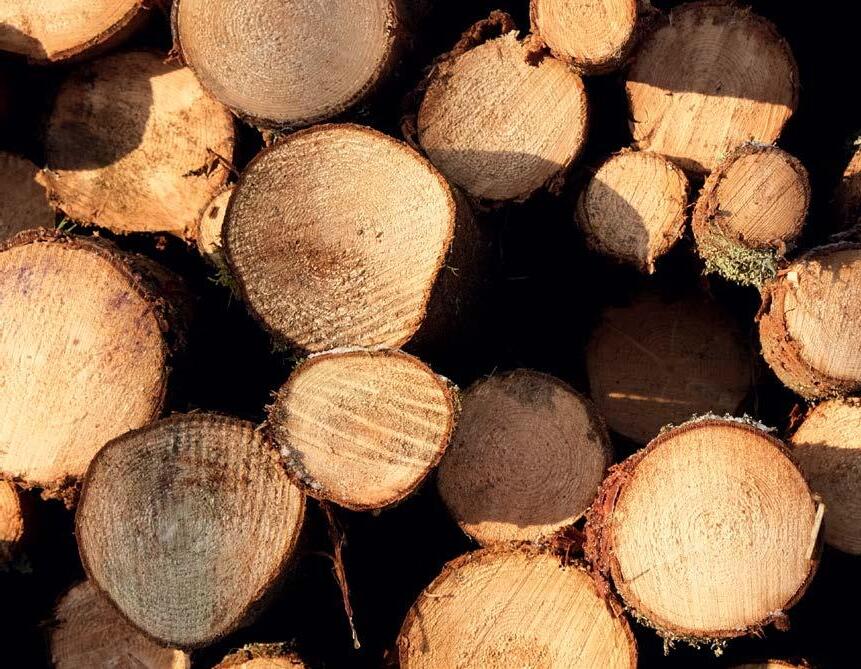
The CTL method allows for more even and reliable harvesting operations. The fewer machines are involved, the easier it is to coordinate them into a seamless team. Moreover, when the productivity rates between the different machines are in balance, the productivity of the whole operation is higher.
The technical utilisation rate of two CTL teams is higher than that of a corresponding tree-length team.
The reliability of the CTL harvesting method is increased even more by using several machine teams. Unlike in the tree-length method, an interruption in one of the CTL machines does not bring the entire harvesting operation into a halt. If one of the CTL harvesters stops, the other team can still continue to operate.
In the tree-length method, an interruption in the feller-buncher freezes the entire operation. Problems with the skidder stop one or two processors, which can cause a dramatic drop in yearly productivity.
CTL machinery is designed to be multifunctional: the same machines can be used for different types of harvesting, from first thinning to regeneration felling. Due to the versatile nature of the machinery in the CTL method, the prevailing harvesting conditions have a significantly smaller impact on productivity. From steep slopes to soft ground –CTL machines work reliably and efficiently.
The CTL forwarder retains its high productivity even at long distances. This ensures high total productivity even when the transportation distance in the forest is long.
Compared to the tree-length method, the machine team in the CTL method is easier to manage. This improves reliability and results in significantly better operative efficiency throughout the year.
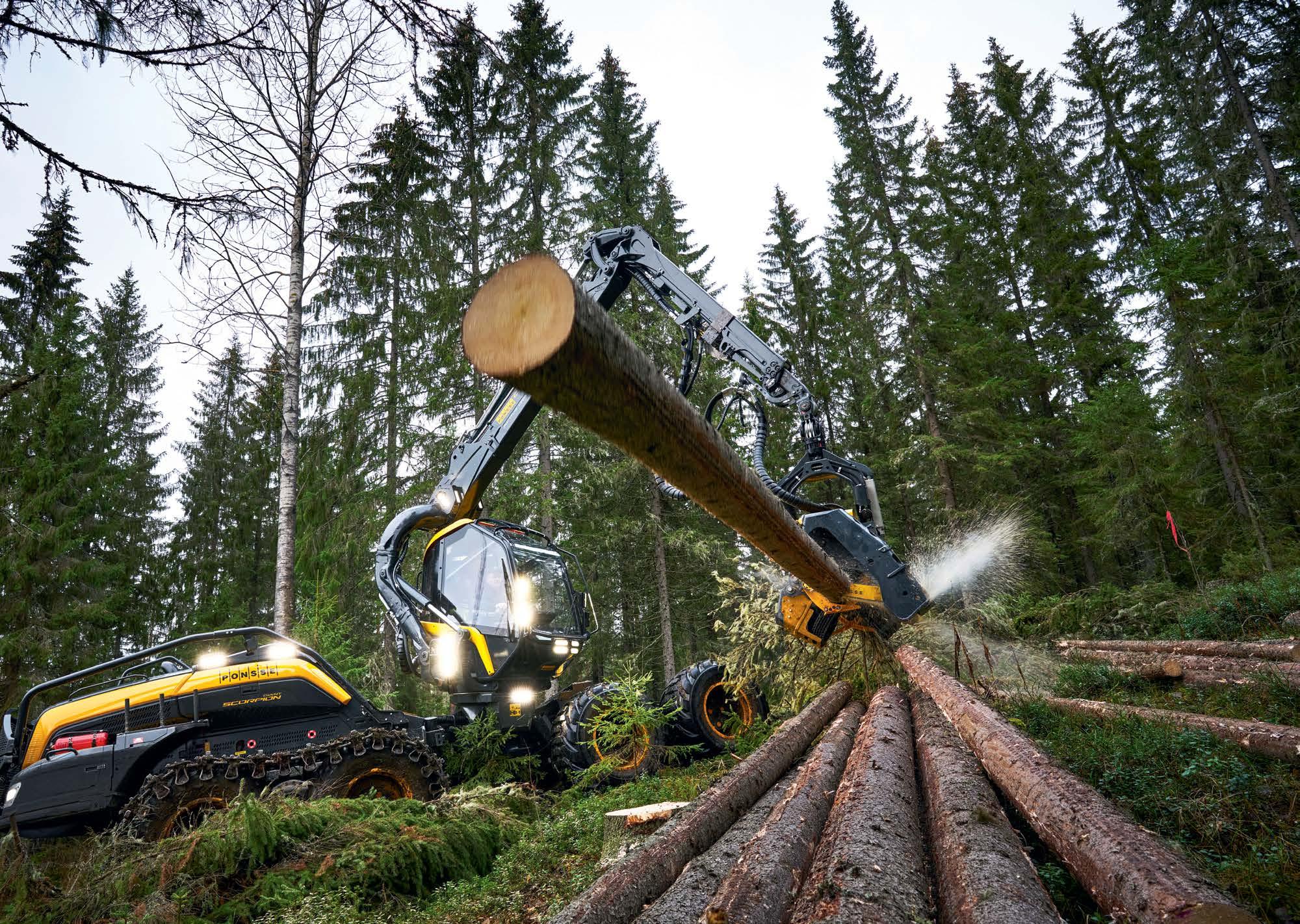
The modern harvester receives details of the required assortments automatically and in real time from the client. This is why the harvester always produces precise and high-quality timber.
The CTL method eliminates overlap and unnecessary steps in the timber harvesting and processing chain. The method was developed to make the most of the valuable raw material, to cut down the costs of harvesting, and to ensure even and high harvesting productivity throughout the year.
In the CTL method, stems are automatically marked for optimal cutting before the first log is cut. By minimising the stem processing stages, the two-machine CTL team can perform tasks that require three to four different machines in the tree-length method.
The modern harvester receives details of the required assortments automatically and in real time from the client. The stem is optimally used and there is little waste. The harvester processes the stem into assortments in the forest – right at the stump.
The CTL method leaves the nutrient-rich leaves, needles, limbs, and tops in the forest. When delimbing and cutting are done at a roadside landing, the landing area has to be bigger and the areas require cleaning up after stems have been processed.

The cost advantages of the CTL method are not limited to more efficient timber harvesting and processing. Further savings are achieved when timber moves from the roadside to the mill – through logistics, product quality, and optimal use of storage areas.
The CTL machine team is cost-effective because it only needs two productive and efficient machines to process the stems. Less fuel is required for every harvested cubic meter than in the four-machine tree-length method.
In the CTL method, the sturdiest logs are transported directly from the roadside to the sawmill, veneer logs to the veneer mill, pulpwood to the paper or pulp mill, and material suitable for bioenergy to the energy plant.
In the tree-length method, stems are usually first transported to a sawmill or intermediate storage location. At the sawmill, the stems are unloaded and cut for sawing. The logs are processed into various assortments that are again loaded for transportation to the relevant mills and plants. The timber goes through several processing cycles, each resulting in more costs.
When logs are transported directly from the forest to their final destinations, without requiring any intermediate storage or being transported back and forth, you save both fuel and time.
In the CTL-method, further savings are achieved when timber moves from the roadside to the mill – through logistics, product quality, and optimal use of storage areas.
1. By communicating with the client, the CTL harvester estimates the quantity and the quality of the stems needed to fill the client’s order.
2. The harvester calculates the optimal way to cut each stem into logs. Through careful and deliberate processing, the harvester uses as much of the valuable raw material as possible.
3. As it moves in the forest, the harvester covers its trail with delimbed branches and tops. This decreases surface pressure and reduces soil damage.
4. The CTL method leaves the nutrient-rich leaves, needles, limbs, and tops in the forest for the next generation of trees to use. Part of this slash can also be gathered for bioenergy use.
5. The forwarder transports each assortment to its pile on the roadside. The two-part CTL machine team is consistent, fuel-efficient and easier to manage.
6. Each assortment is transported directly to its destination: logs to sawmills, veneer logs to the veneer mill and pulpwood to the paper or pulp mill.
7. In the CTL method, logs destined, for example, for a sawmill are sorted in batches by assortment. When all the logs arriving at a sawmill are of similar diameter, the batch can be processed faster by the sawmill.
1. The feller-buncher fells each stem with a circular saw, which often causes splits in the valuable first log. The method also destroys around five centimetres (two inches) of wood fibre around the cutting point.
2. The skidder pulls the felled trees to the roadside landing, dragging them across the forest floor. This damages the soil and diminishes the quality of the valuable wood raw material.
3. The skidder’s back-and-forth movement compacts the soil and increases the risk of erosion.
4. The tree-length method requires a large roadside landing, where the processor delimbs and cuts the stems.
5. The limbs and tops around the landing create a major forest fire risk.
6. After the stems are processed, the landing area needs to be cleared. Often, this is done by burning, which releases a significant amount of carbon dioxide into the atmosphere.
7. In the tree-length method, stems are first transported to a sawmill where they are unloaded and cut for sawing. The timber used in, for example, bioenergy or pulp production, needs to be loaded again and moved to its correct destination.
The CTL method optimises each tree stem to meet the needs of the end client.
The client, usually a mill, sends specifications of its raw material needs detailing the assortment, length, and quality requirements.
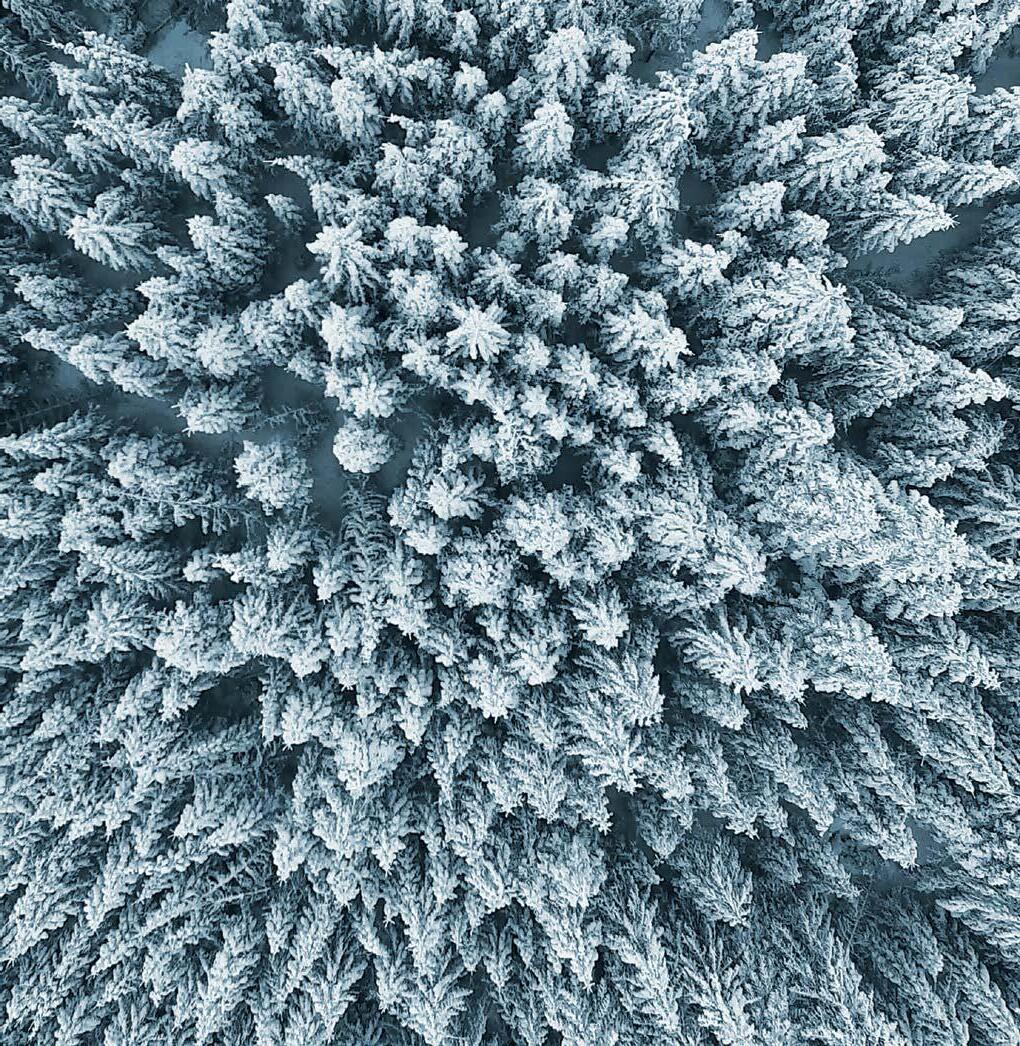
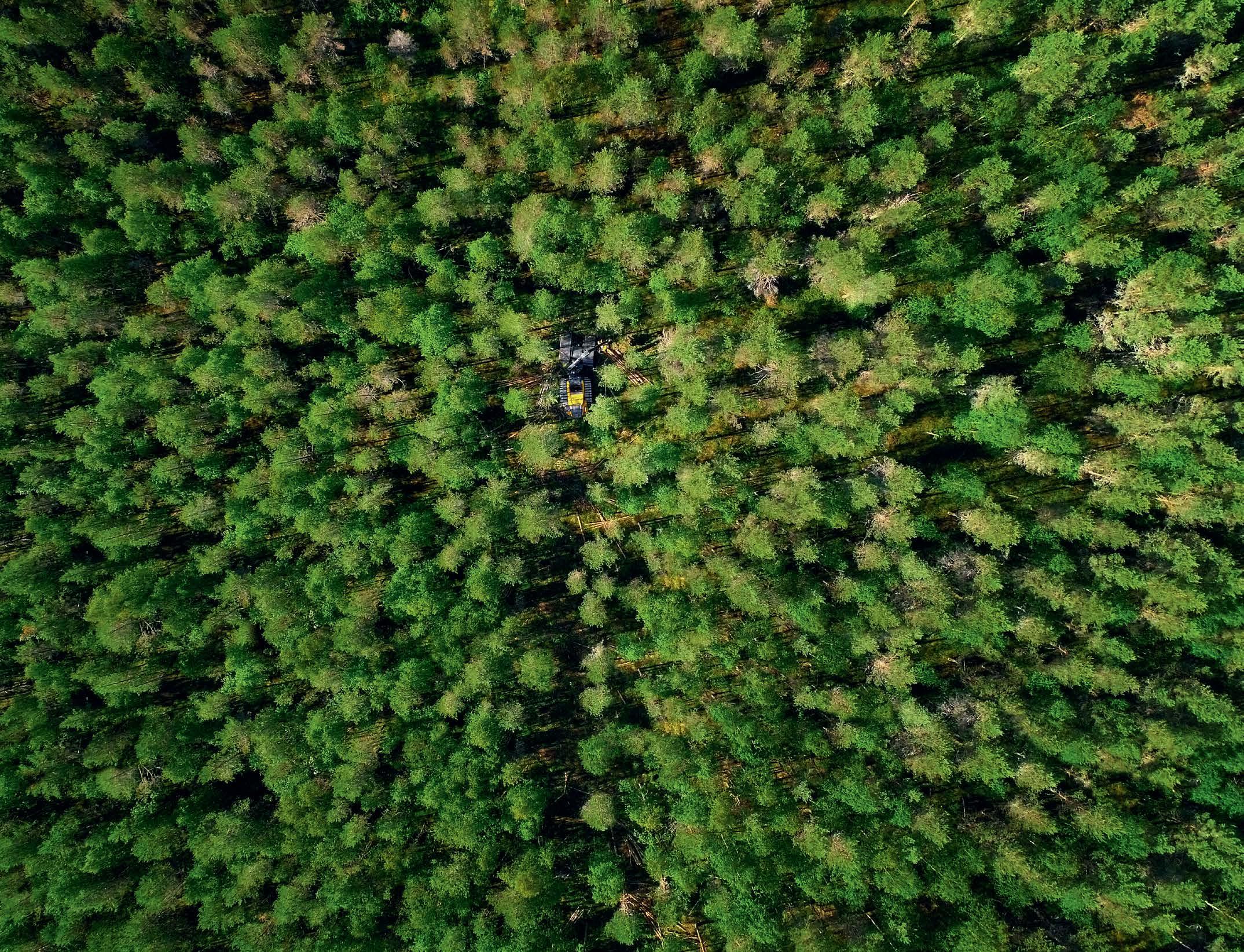
The CTL harvester optimises each stem based on the specifications in the client’s order and cuts the stem into these predetermined lengths. This allows you to get more out of the material both in terms of quality and quantity.
The CTL method allows for even the smallest piece of special wood to be extracted and transported to a mill in a cost-effective way. Special wood includes certain log qualities, veneer logs and poles, for example.
The way a stem is cut affects the quality of the final product. In the tree-length method, the feller-buncher’s circular saw fells trees; when processing several stems at the same time, the valuable butt log is cracked and damaged.
The CTL harvester’s thin chain cuts each stem precisely, with minimal damage to the tree. In the tree-length method, the stem is cut by a circular saw. This, together with handling several trees simultaneously, causes splits in the valuable first log.
Split first logs are a considerable quality issue in the sawmill industry. The cutting method used in tree-length harvesting also destroys around five centimetres (two inches) of wood fibre around the cutting point. This means that valuable material is lost with every cut.
The technically advanced CTL harvester minimises damage to the stem. A CTL harvester calculates the best cutting point and uses as much of the raw material as possible. The careful and deliberate handling of the stem reduces the number of splits in first logs.
As it moves in the forest, the CTL harvester covers its trail with delimbed branches and tops. This decreases surface pressure and reduces soil damage.
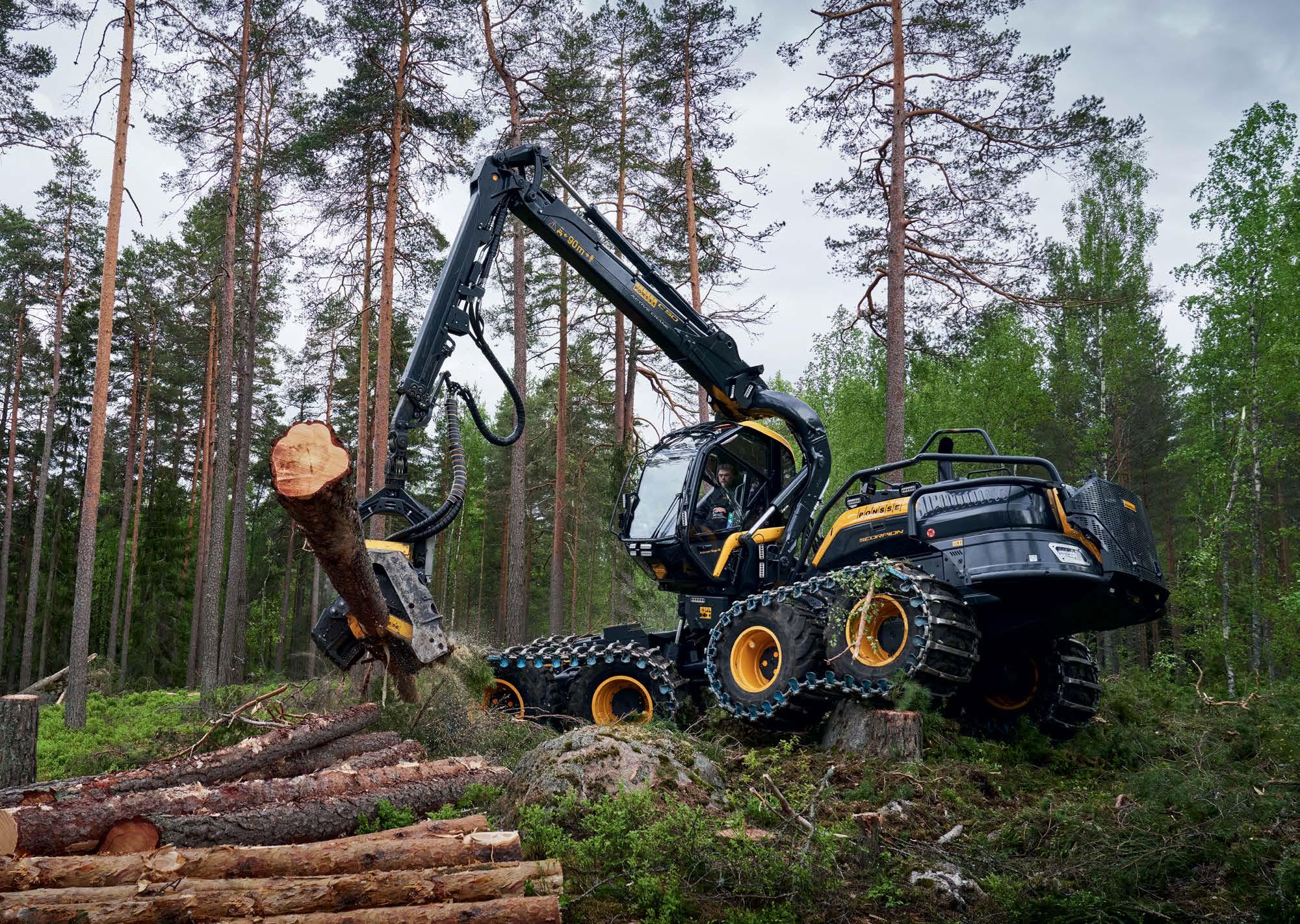
DIMENSIONS
The harvester calculates the value of each tree individually. The advanced measuring instrument provides an accurate prediction of the stem’s form and diameter throughout the entire stem.
The harvester measures the base of each stem and compares the results with species-specific averages as well as other stems previously felled in the forest.
Based on these comparisons, the harvester forms an accurate prognosis of the length and width of the stem –in one-centimetre (less than half an inch!) intervals throughout the length of the tree.
When the required assortments have been calculated, the logs are cut and placed directly onto their correct piles. The harvester records the location of each pile and the number and volume of logs in each pile automatically.
In the CTL method, logs destined, for example, for a sawmill are sorted in batches by assortment. When all the logs arriving at a sawmill are of similar diameter, the batch can be processed faster. Again, you save time, money, and nerves!
In the blink of an eye, the harvester’s automation system optimises each stem so that its processing value is as high as possible.
The harvester calculates how many stems are needed to deliver the client’s order and what are the dimensions and quality required of the stems to be felled.
Based on the requirements and measurements taken from the stems, the harvester calculates the quantity and value of timber available from each stem. Simultaneously, the harvester determines the best possible way to cut the stem.

The quality of trees and the rate at which they grow have a significant impact on the profitability of forest management. Well-timed and well-executed thinning can improve both the growing rate and quality. Well-timed thinning encourages diameter growth. When thinning is carried out in line with good forestry practices, it reduces root competition and improves the availability of nutrients and water.
The increase in light strengthens needles and leaves. The ‘green gold’ of a well-managed forest grows faster and better.
Because the CTL method processes each tree individually, the operator can apply a variety of thinning models in a flexible way. The crane of an agile CTL harvester can reach up to 11 meters (36 feet). Thanks to the high-reaching crane and a compact harvester head, CTL machines can perform selective thinning.
Selective thinning means that an overgrown forest is thinned so that the best trees are left to grow in line with forest management recommendations. This will increase the value of the forest, and later thinning or regeneration felling will produce better quality timber.
When thinning is carried out correctly, it prevents trees from growing thin and helps to keep their tops big and healthy. A healthy forest significantly reduces the risk of damage from snow, storms, insects, and fire. In practice, selective thinning cannot be carried out within the tree-length method.
So-called continuous cover forestry is possible when using the flexible CTL harvesting method. In continuous cover forestry, trees in a forest are constantly being felled but the entire forest is never cleared all at once. The objective is for as many of the harvested trees as possible to produce sturdy and valuable logs.
Continuous cover forestry is suitable for forests with healthy and high-quality trees and where regeneration is easy and reliable. Planting is not part of continuous cover forestry. The absorption of carbon by trees and the soil is maximized.
A continuous cover forest is never clear-felled, which means that strip roads for the harvesting machinery must be cleared. In a continuous cover forest, a team comprising an agile CTL harvester and a forwarder is the only way to get mechanised harvesting done.
In traditional forest management, northern forests are usually thinned twice during their 80-year growth cycle. During the first thinning, the trees are around 30–40 years old, and the final product is often only pulpwood or energy wood.
In continuous cover forestry, timber is harvested more frequently, in around 15 – 20-year cycles. The aim is to have as many trees as possible grow into log size during one cycle.
The ‘green gold’ of a well-managed forest grows faster and better.
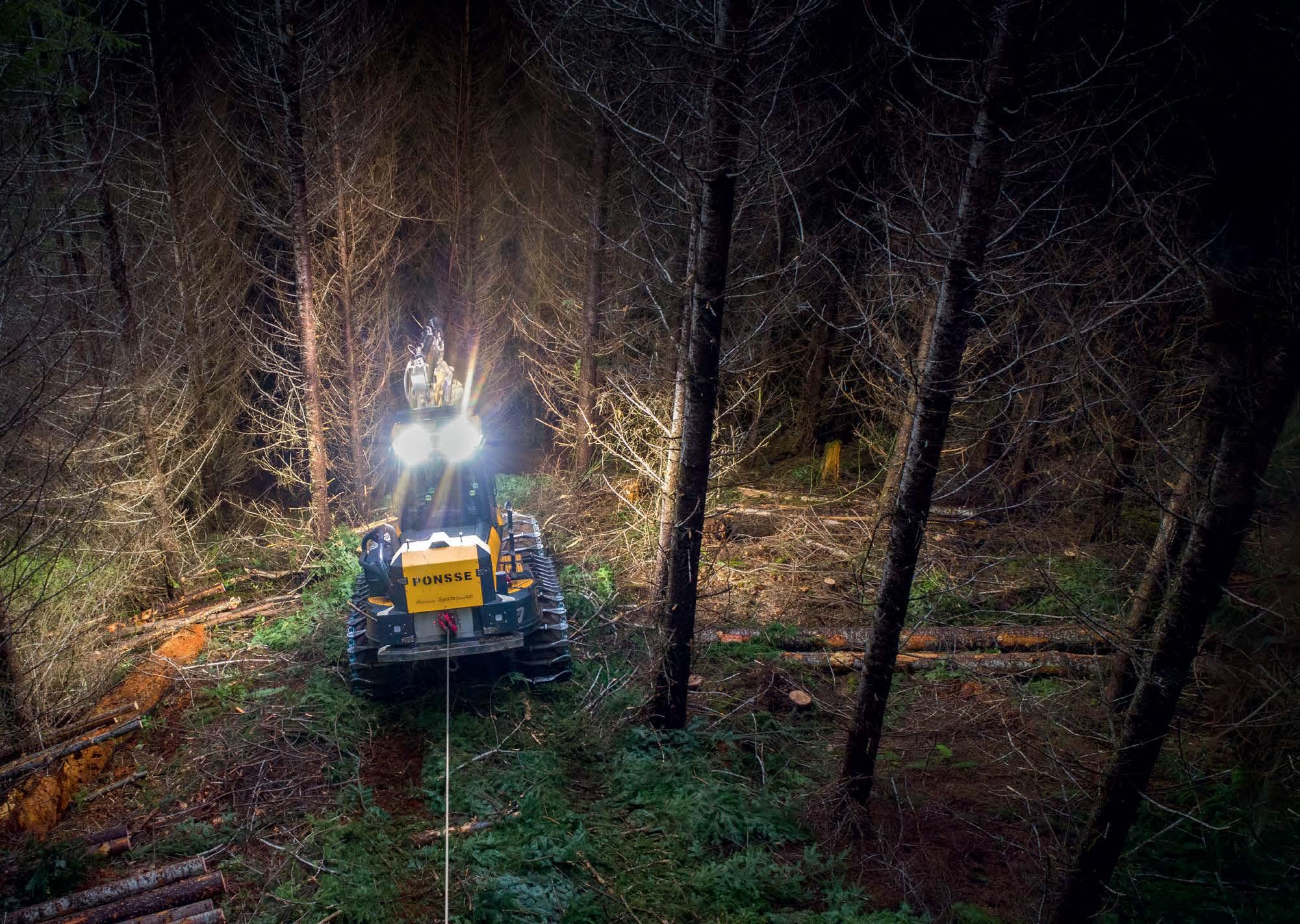
In recent years, mechanised CTL harvesting has become more common in steep slopes.
It is estimated that over 90 per cent of all cable-assisted manual harvesting on slopes could be efficiently and safely replaced by a mechanised CTL alternative.
Winch-assisted CTL machines can even harvest on slopes that are difficult to walk on.
CTL machinery has low surface pressure and it is balanced in an optimal way. This makes the machines particularly well-suited to challenging harvesting conditions such as soft peat slopes.
The steeper the slope, the safer, more efficient, and more environmentally friendly option CTL is compared to the tree-length alternative.
When working on slopes, the greatest challenge for the tree-length method is the uneven terrain on which the felled trees have to be transported in the forest. First, the felled trees must be moved from the slope to a more even terrain so that a skidder can transport them to the next stage. In practice, this is done with a shovel logger which follows the feller-buncher and moves one or two logs at a time for the skidder to reach. In the tree-length method, the feller-buncher is often followed by a shovel logger when working on slopes.
Cable yarder solutions are sometimes needed to transport trees on extremely steep slopes.
Handling heavy loads smoothly on steep slopes requires a powerful forwarder and a crane pillar with a big tilt angle. An agile CTL machine team handles steep slope harvesting with no problems. The compact and cost-effective two-machine team is enough to get the job done.
When working on extremely steep slopes, CTL machines can be equipped with specially designed winches which improve safety and help prevent soil damage significantly.
Manual harvesting methods have traditionally been preferred for steep slope harvesting. Manual slope harvesting uses various winch and cable line systems as aids.
Compared to mechanised harvesting, manual forestry is extremely strenuous and dangerous. In some countries, nearly three per cent of forestry workers are injured or killed each year while carrying out manual forestry.
In Finland, nearly all timber harvesting is mechanised. The forest industry has, on average, one casualty in a decade.
The CTL machine team is flexible, which means that the size of the stand or transportation distance do not affect the productivity of the entire team as they would in the tree-length method.
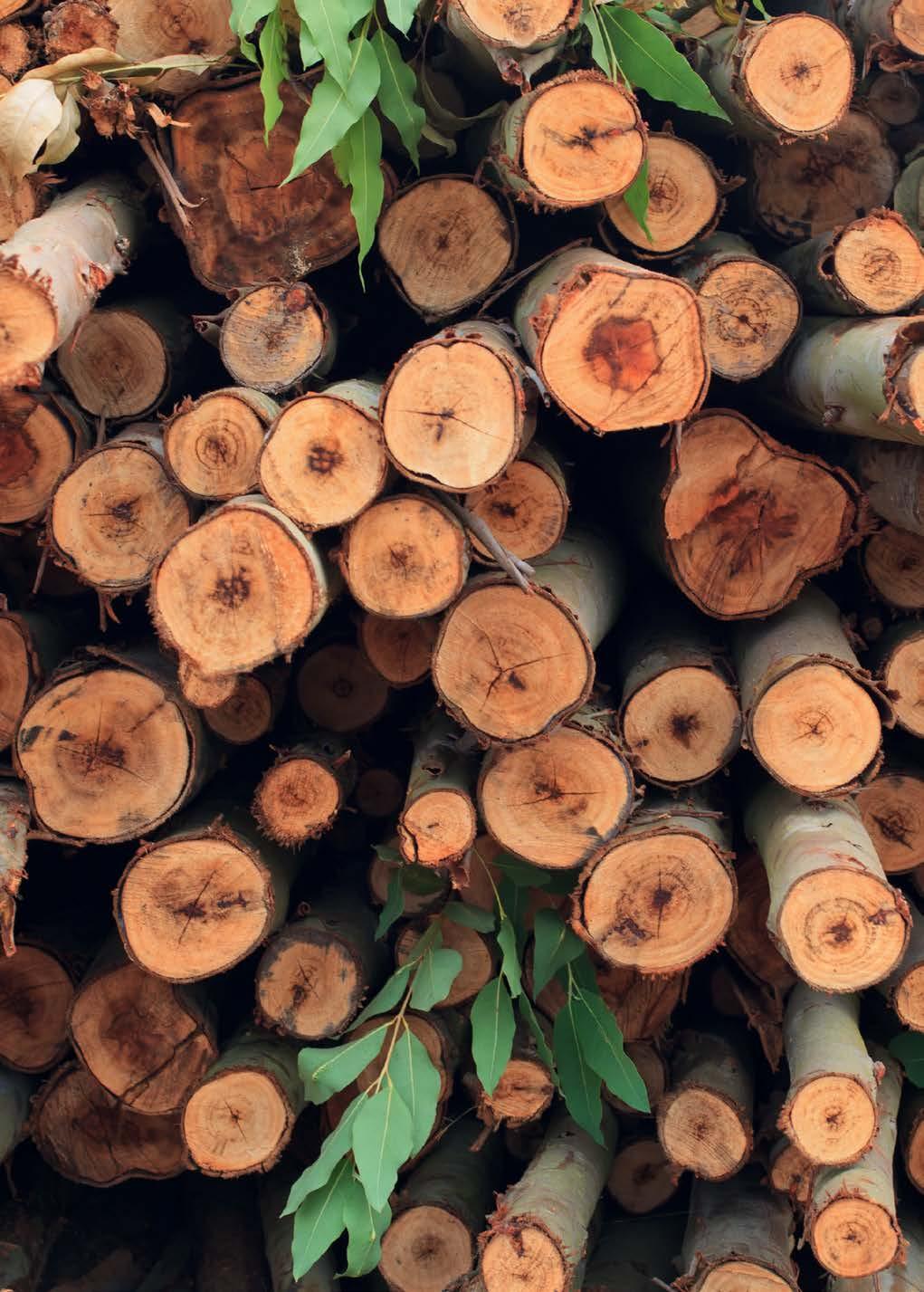
The simple and efficient CTL method gains a significant cost advantage from the good compatibility of the machinery: the harvester’s work rate goes seamlessly together with that of the forwarder. While the harvester advances felling, delimbing, optimising and cutting trees, the forwarder transports the various assortments to the roadside.
The productivity of the entire CTL team remains balanced and high even when harvesting conditions change and so the valuable raw material is always delivered quickly and cost-effectively to the processing plant. With CTL, you burn less fuel and work more efficiently.
Conditions are ideal for the tree-length method when the transportation distance in the forest is short, the soil is dry and terrain even. These conditions allow the heavy feller-buncher to move efficiently around a tree plantation felling six or seven trees in one go. A skidder then picks up the bunch of stems created by the feller-buncher and transports them to the roadside landing.
The feller-buncher is only worth operating at full capacity. When the transportation distance in the forest is short, one skidder is enough to handle the felled trees. However, when the feller-buncher moves further away from the road, the skidder can no longer keep up. Soon, you need another skidder. And then a third one. As the work goes on, trying to manage all these machines becomes exceedingly complicated.
The cost-effectiveness of the tree-length method also depends on the size of the load the skidder can transport in one trip. If there is too much or too little timber per harvested hectare, the feller-buncher will have difficulties creating suitably sized bunches. The machinery is not used in an optimal way and time and money are wasted.
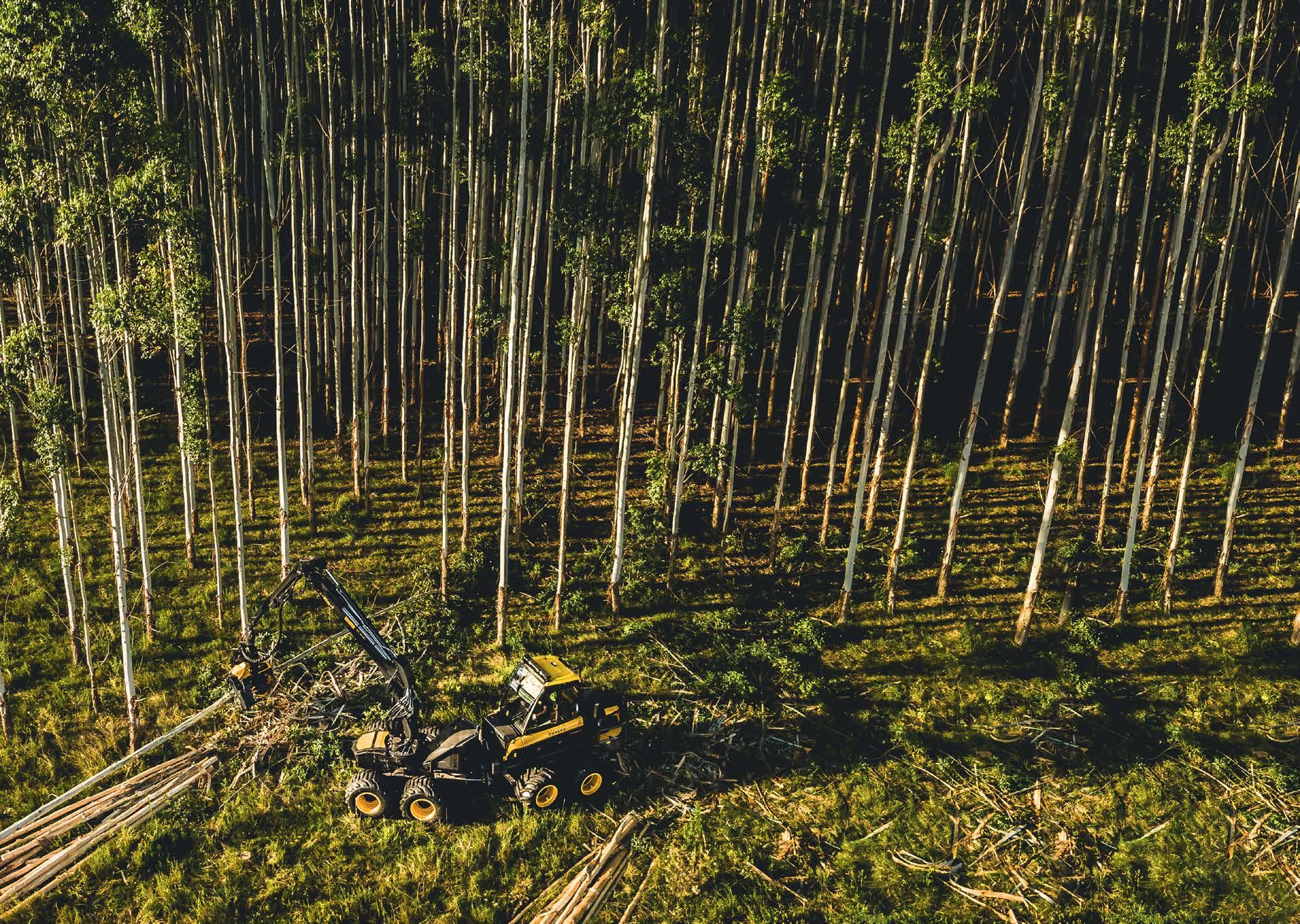
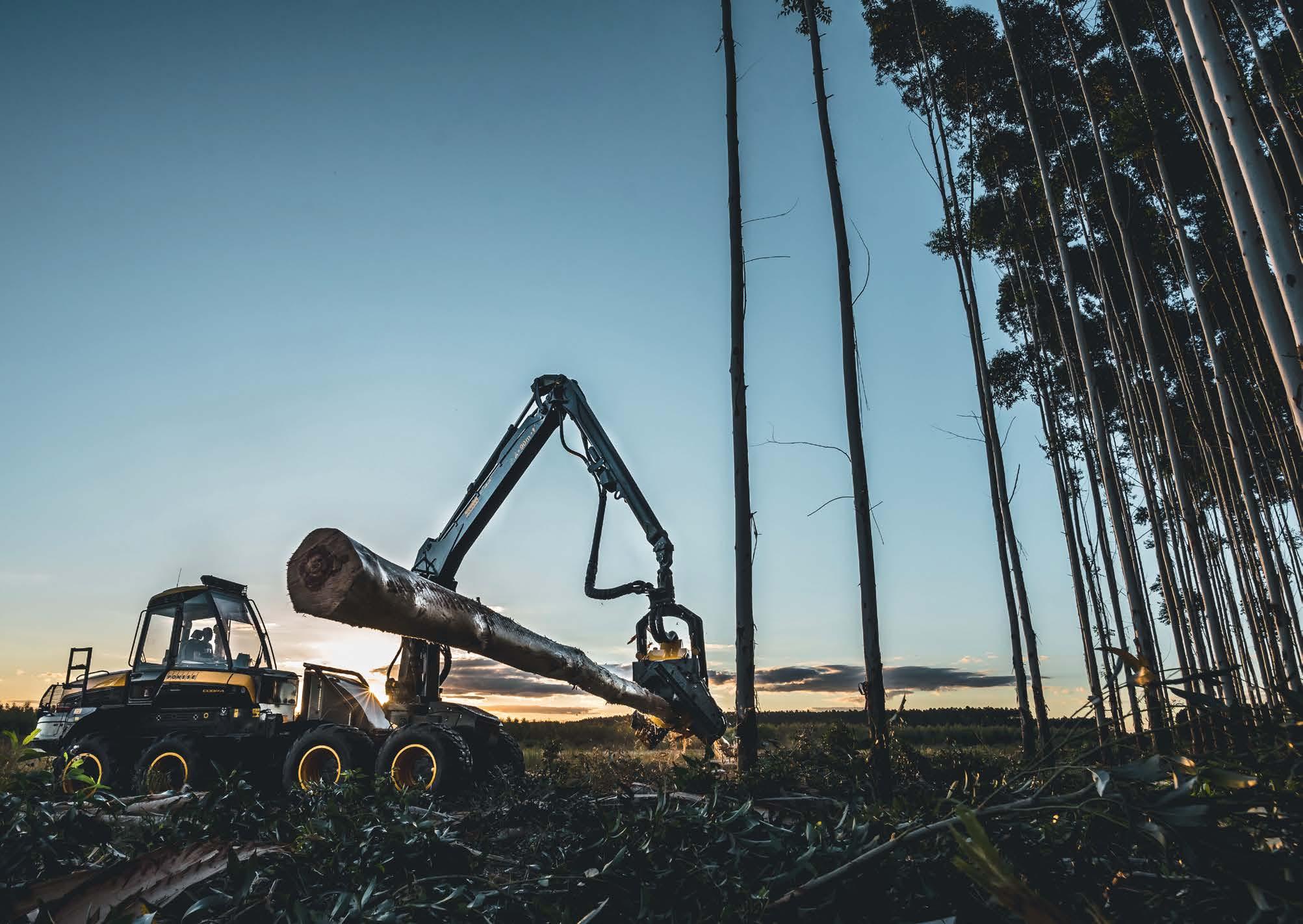
Harvesting conditions vary greatly depending on the season. Adaptability to changing conditions is an important factor to consider when assessing how cost-effective a harvesting method is.
The CTL method, on the other hand, is also successful in rainy conditions. When the soil is wet, the machinery can be equipped with special tracks for soft surfaces. The surface pressure created by an agile CTL machine is low, which means that it does not damage the forest floor in the way the tree-length machines would.
With the light-structured CTL machines, productivity remains high and harvesting can progress at a steady pace. The trees felled in the CTL method are not dragged across the forest floor. This way the stems stay clean and retain their value even in rainy conditions.
In the tree-length method, harvesting is ineffective in rainy conditions. When the skidder pulls the timber bundle behind it, branches and tops are dragged against the ground. Resistance is high, and the skidder has troubles working efficiently in a wet and soft terrain. The valuable timber becomes contaminated with dirt and sand, and the quality of the end product decreases. The skidder’s centre of mass also makes it more difficult to operate in challenging conditions. Often, tree-length harvesting simply is not productive during the rainy season.
23,000 kg (50,000 lbs) 80 kg (175 lbs)
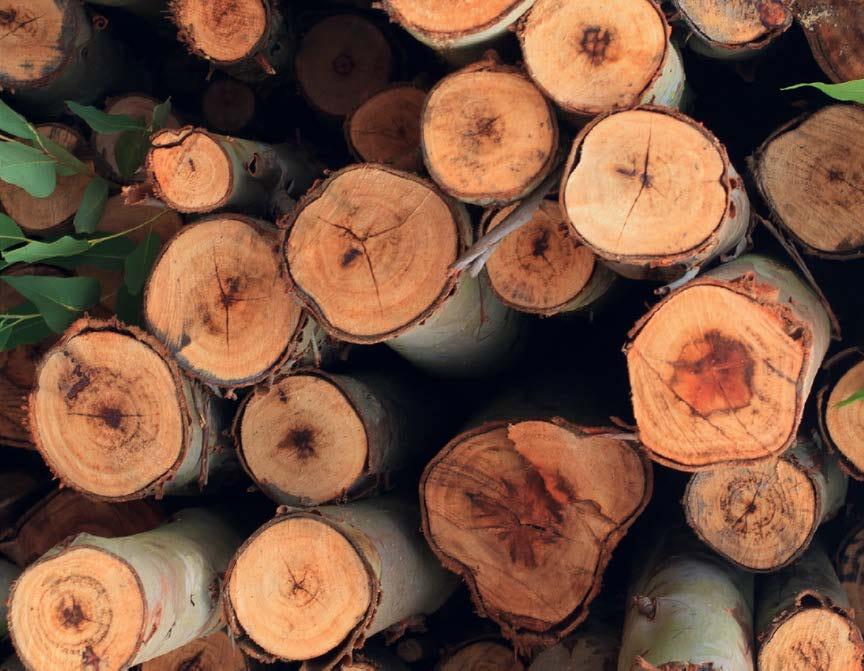
According to forecasts by the Intergovernmental Panel on Climate Change (IPCC), annual rainfall in the south-eastern parts of South America may increase by up to 25 per cent by the end of the century. In the CTL method, harvesting remains cost-efficient – even in rainy conditions.
Climate change is often seen as a challenge that will face future generations. However, it is already having a significant impact on harvesting costs today. Rainfall will increase in many places, and the tree-length method will be faced with even more challenges. The flexible CTL method guarantees efficient harvesting even on soft surfaces.
During one growth cycle, traditional harvesting methods may be able to compete with CTL in terms of cost-effectiveness, at least when weather conditions are ideal. But what about the next cycle –and the next?
In the tree-length method, the skidder drags the felled trees to the side of the road. This dragging damages the soil and exposes it to erosion, especially on slopes.
Compared to a CTL forwarder, a skidder in the tree-length method drives two to three times the distance around the forest. The skidder creates a high surface pressure and its back-and-forth movement compacts the soil and weakens the forest’s ability to grow.
A CTL machine moves easily around any forest regardless of challenging conditions, weather, or terrain. A harvester with a balanced weight distribution spreads delimbed branches and tops around as it moves in the forest.
Covering the trail with slash distributes the load created by the machinery more evenly. The lighter load reduces soil damage and the risk of erosion significantly.
Timber produced in eucalyptus plantations in southern forests is primarily used as pulpwood. This means that the felled trees must be debarked. Any remaining bark will weaken the quality of the pulpwood and pulp. If the bark comes off easily, harvesting is efficient. However, if the bark is difficult to remove, the quality of the final product will suffer – and so will the cost-effectiveness of the entire production chain.
The tree-length method drags the felled eucalyptus tree stems to the roadside landing to be debarked. The stems may sit there waiting for two to three days. As timber dries, the bark sticks on harder and its removal becomes increasingly difficult. More bark remains on the timber and the quality of the pulpwood suffers.
The concentration of removed bark around the landing is a huge fire hazard, especially in dry weather. If the bark is not collected for bioenergy use, the cost of disposing of the bark increases the total cost of harvesting.
In the CTL method, trees can be debarked at the stump. This is when the bark comes off the easiest. The resulting pulpwood is higher in quality and value.

Sustainable forestry practices retain the forest’s biodiversity, productivity, health, and ability to regenerate. Sustainable harvesting does not only consider environmental impacts but also aims to ensure the economic profitability of the forest. A well-managed forest remains productive growth cycle after growth cycle.
Regular thinning is at the centre of sustainable forest management: it improves the forest’s growth rate and promotes diameter growth. Usually, one or two thinnings are carried out over the 60–80 year growth cycle of a coniferous forest.
The type of forest management that seems to produce the greatest financial gain today may jeopardize the forest’s value tomorrow.
The best results are achieved through good planning and long-term forest management.
Our mission is to ensure that our forests will remain sources of well-being for future generations.

When a forest becomes too thick, the trees have to compete for light and nutrients. This stifles the diameter growth of the stems while height growth accelerates. The resulting trees are thinner and thus particularly vulnerable against heavy snow and storms. Regular thinning allows the remaining trees to grow thick, healthy and high in quality.
The crane of an agile CTL harvester can reach up to 11 meters (36 feet) which enables thinning in line with sustainable forestry practices. The tree-length method is poorly suited for thinning as the method damages both the remaining trees and the soil.
Regular thinning promotes the overall growth of forests. Since then, Finland’s forest resources have seen much more growth than loss. Today, the annual growth of forests exceeds the number of trees felled and lost naturally by around 20 million cubic meters.

Forests reduce the amount of carbon dioxide in the atmosphere and slow down the acceleration of the greenhouse effect. This is why forests are carbon sinks.
The ability of forests to capture and absorb carbon dioxide is crucial to the climate. Trees bind carbon dioxide from the atmosphere to make glucose, about half of which trees use for energy to live and the other half for growth. While a small amount of growth drops onto the soil in the form of needles, twigs and pieces of bark, most of it binds fairly permanently in stems, branches and roots. Carbon dioxide removed from the atmosphere is stored in wood until trees burn or decay.
Both virgin and commercial forests play important roles in the fight against climate change. When left in its natural state, a forest acts as a carbon sink for a few decades, but then the net growth goes down to zero and the forest changes from a carbon sink to a carbon storage. A well-managed commercial forest serves as both a carbon sink and a carbon storage.
In other words, fully-grown trees in a virgin forest retain the carbon they bind but do not bind new carbon dioxide as effectively as young, growing trees.
In sustainable forest management, the proportion of growing trees is kept as high as possible. In terms of carbon sequestration, solutions must always be found that are sustainable in the long term.
Regardless of forest management practices, every full-grown tree was a small seedling in its time. Good forestry practices guarantee the forest’s biodiversity as well as the best production of timber, i.e. growing seedlings into trees.
The best growth is achieved when the age structure in a woodlot is optimal and the trees have sufficient space to grow. When the annual growth falls below the average, it is time to regenerate the forest.
Trees in a sustainably managed forest are more valuable – both to the environment and to the forest owner. Mechanised, sustainable and ecological forest management can only be carried out using the CTL method.
When a forest is allowed to grow for too long, growth slows down and the trees become exposed to many problems. Unhealthy trees attract insects and parasitic fungi as these often attack the old, weak, or damaged trees first.
As the pest population grows, even healthy trees are at risk. For example, the European spruce bark beetle loves to attack the most valuable trees – those that have been growing in the forest for decades. Insects can destroy whole sections of a forest creating a sizable dent in the forest owner’s wallet.
The price per cubic metre of timber withered by pests can drop by several dozen percent. Regular thinning of the forest keeps it healthy and efficiently wards off pests and wood-decay fungi.
Fully-grown trees in a virgin forest retain the carbon they bind but do not bind new carbon dioxide as effectively as young, growing trees.

The risk of fire is lower in a well-managed forest than in one left in its natural state. For example, wildfires on the west coast of Canada emit two or three times more carbon dioxide than fossil fuels. Due to widespread wildfires, each year the almost 400 million hectares of forests in Canada release more carbon dioxide than they bind.
The climate impact of harvesting does not stop at the roadside. In the CTL method, trees are cut into correct assortments and then transported directly to the right destination: logs to the sawmill, pulpwood to the pulp mill, and energy wood to the power plant. This reduces the number of miles both in the forest and on the road.
When felled trees are processed into long-lasting products, the carbon dioxide bound in those trees releases into the atmosphere more slowly. Durable wood products, such as timber buildings and wooden furniture, can be considered as types of small carbon storages. When a larger share of felled trees is used in these products, the amount of CO2 in the atmosphere decreases. In the CTL method, the largest possible share of timber can be processed into valuable and durable logs and then into products that store carbon longer.
In the CTL method, the largest possible share of timber can be processed into valuable and durable logs.

In Sweden, for example, improvements in safety have gone hand in hand with the spreading of mechanised harvesting methods. Swedish harvesting has mechanised rapidly since the 1960s. From 1970 to 1990, the number of accidents in the Swedish forest industry fell by more than 60 percent, and the number keeps going down.
The forestry sector employs almost 14 million people worldwide. In many regions, harvesting takes place in terrain, where it is not always possible to move around on foot. Despite improvements in working conditions, health and safety, accidents are regrettably common. An estimated 170,000 forest workers are injured or killed every year. Harvesting is still considered a tough and dangerous job.
Replacing manual harvesting with mechanised methods is by far the most effective way to reduce accidents and to improve the safety of workers.
The link between mechanisation and safer harvesting has been recognised all over the world, from Brazil to Canada, from New Zealand to the United States. Safety is improved when workers are no longer exposed to the elements but work in the machine’s protected and air-conditioned cabin. This also makes work more satisfying.
A large number of fatal accidents in the forest sector happen when manual harvesting is carried out on slopes. Technical advancements in mechanised harvesting machinery have reduced the number of accidents even during steep slope harvesting.
The agile CTL method is much more efficient and safer on slopes than the tree-length method. CTL machines are designed to consider the different terrains and stands and, especially, health and safety concerns. The machines are well-balanced, and they have a low centre of gravity. They are unlikely to tip over even on the steepest of slopes.
Safety – and savings – are the features that affect insurance companies’ attitudes towards the CTL method. On the west coast of the United States, in areas with variable terrain, premiums for the tree-length method are up to seven times higher than for the CTL method.
Safety is improved when workers are no longer exposed to the elements but work in the machine’s protected and air-conditioned cabin. This also makes work more satisfying.
“Landowners love CTL! It is the wave of the future of logging.”
- KIRK SANDERS, SANDERS TIMBER
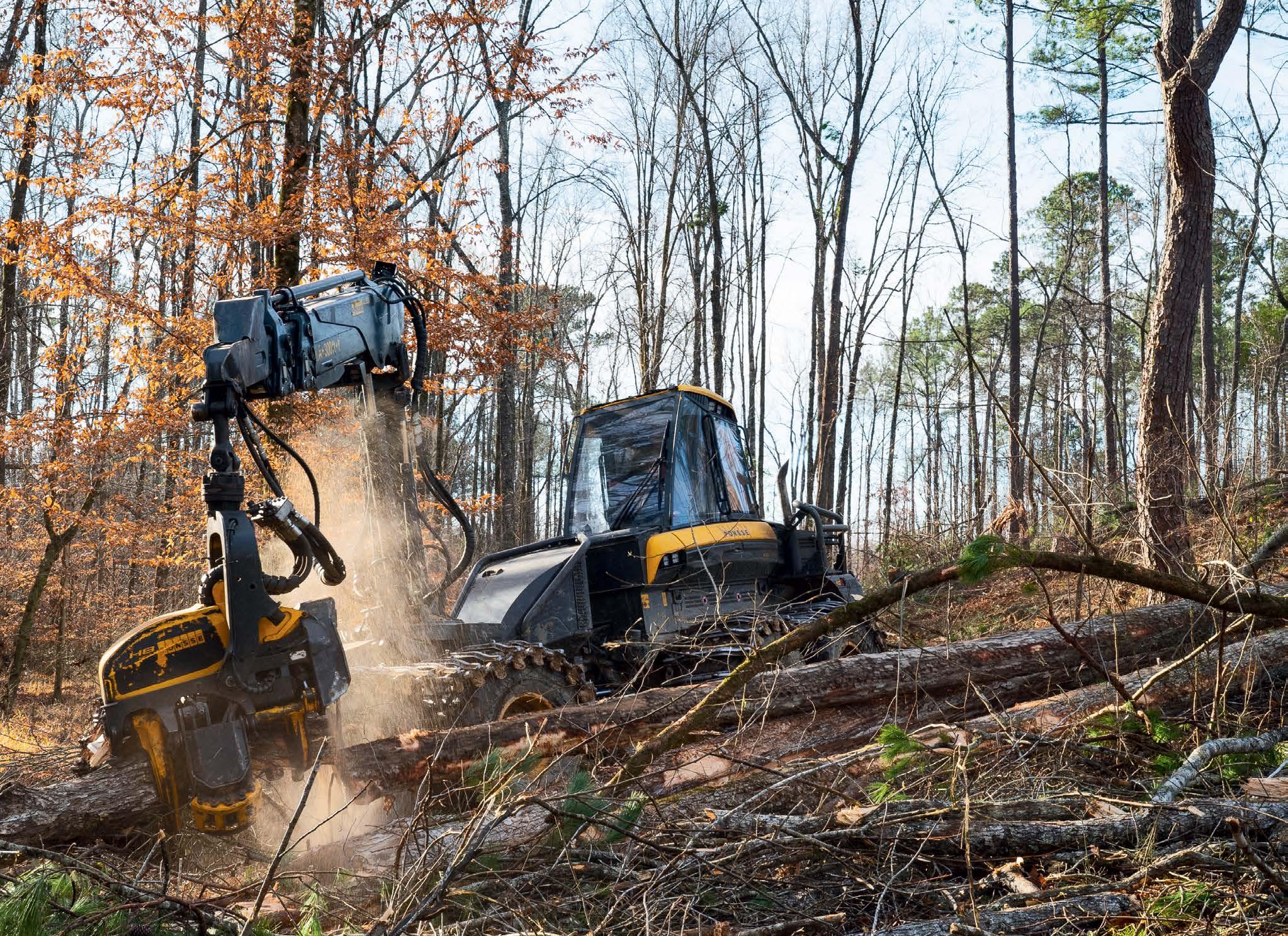
In 2016, Alabama-based Sanders Timber added versatile and cost-efficient CTL machines to its fleet of traditional, tree-length logging machinery. Spurring the decision were the adaptability of the machines to challenging logging conditions and the quality of the timber they produce.
The owner of Sanders Timber, Kirk Sanders, is pleased with the addition.
– We use CTL harvesters to fell and delimb trees in the forest. By having the branches and tops remain in the forest, we do away with cleaning costs. The method produces less strain on the soil and helps the forest regenerate. Landowners love CTL!
For Sanders Timber, the best wood is found in the most difficult locations. A large chunk of the company’s logging is carried out on uneven terrain or on wet and soft surfaces – in conditions where traditional tree-length machines fail.
– As our primary product, we cut top grade hardwood logs. These days, the applicable trees are mostly found in challenging conditions. CTL machinery is not often used to fell stems this heavy and long, but the machines deal with them beautifully. I think many loggers are unaware of just how well-suited these machines are for southern hardwood forests.
In the southern part of the United States, the tree-length method still beats CTL in popularity. However, lower equipment, payroll and insurance costs are closing the gap quickly. With CTL becoming more and more cost-efficient, Sanders believes the method will eventually replace tree-length logging altogether.
– Sawmills are beginning to see the benefits of CTL. Take our neighbours in Georgia as an example: some of the mills there have already started to demand CTL wood only. It is the wave of the future of logging.
“The conditions for logging are challenging. We’ve cleared a unique market niche for ourselves.”
- JOSH MARSHALL, MARSHALL FORESTRY

Two years ago, Washington State’s Marshall Forestry made the switch from traditional tree-length logging to the versatile CTL method. Preceding the shift was a long-standing shortage of workforce: year by year, the number of available skilled workers kept decreasing.
– In the tree-length method, logging operations require a minimum of eight to ten workers. By transitioning to CTL, we can scale our operations flexibly and react to the demands of the market, says Josh Marshall of Marshall Forestry.
The transition was effortless: when the new machinery arrived, the keys were handed to four of Marshall’s best operators –and the show went on.
The transition to CTL has made Marshall Forestry’s operations more profitable: employees are more productive, and the resulting timber is higher in quality. Less competition means better margins for Marshall.
– The conditions for logging are challenging and most of our operations are carried out in steep slopes. As the only logger in the area, our CTL machines are tethered and thus superbly suited to these difficult conditions. We’ve cleared a unique market niche for ourselves.
With many years under their belts, experienced loggers are used to traditional methods and the jump to CTL can seem daunting. Nevertheless, the market is only moving forward.
– As sawmills are becoming more advanced, we’re seeing rapid growth in the demand for high-quality CTL wood, Marshall concludes.
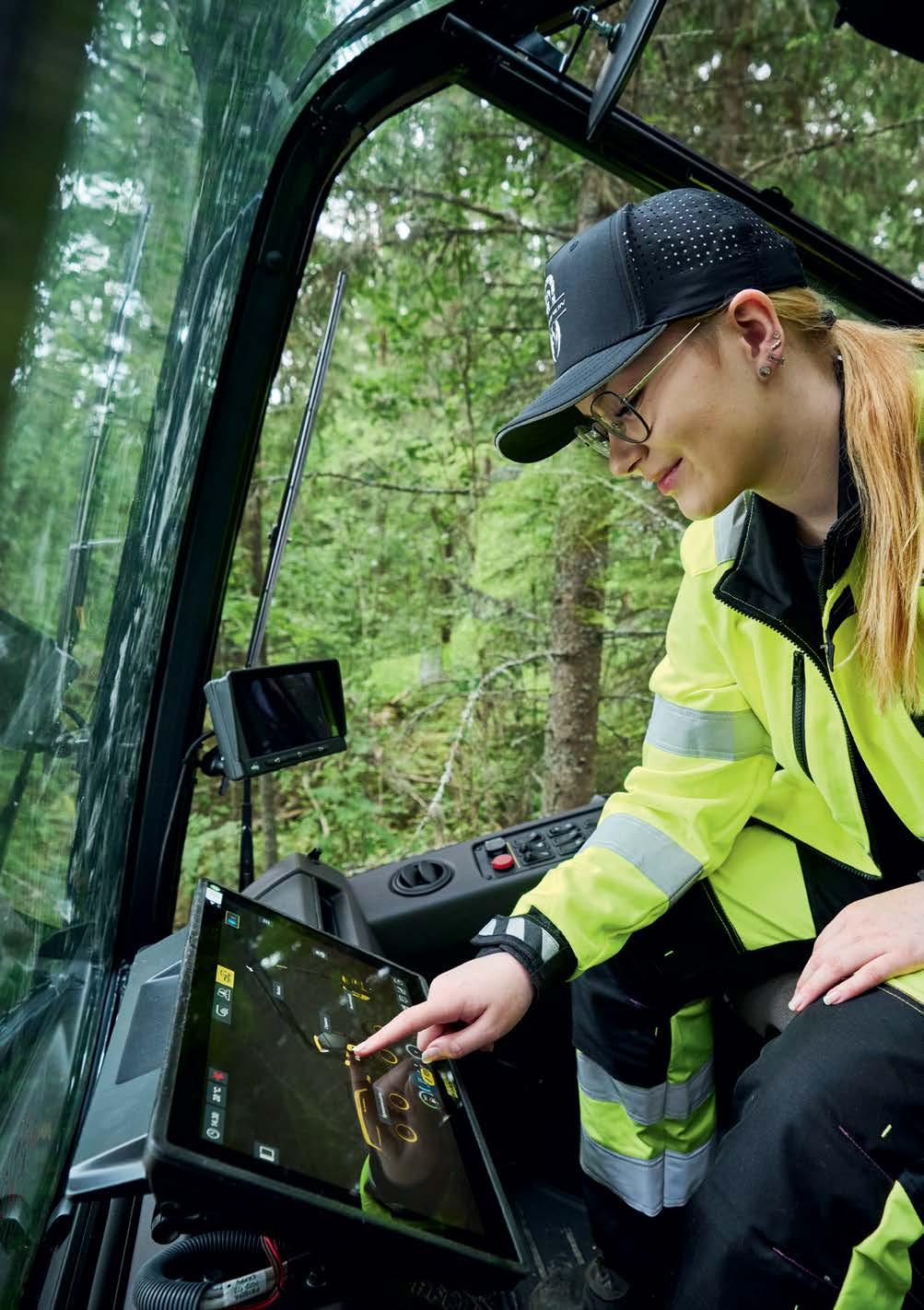
THE MODERN FORESTRY PROFESSIONAL
Compared to conventional tree-length method machinery, CTL harvesters are sophisticated and versatile. In the CTL method, one machine performs the functions of two tree-length method machines: The harvester both cuts down trees and processes the felled stems into assortments.
Wearing two hats also means that the harvester operator needs to have more skills: To work as a CTL machine operator is more valuable, efficient, safer, and more satisfying. Having highly skilled operators has been proven to increase productivity in harvesting operations.
Ponsse’s extensive, state-of-the-art training network offers training in the sustainable and efficient CTL harvesting method across the world. In addition to training for operators and mechanics, the advanced programmes include training in harvesting process management, productive harvesting methods, and thinning operations.
Ponsse Academy’s programmes benefit not only those working in harvesting but also forest owners and teachers in local educational institutions. Training periods range from short training sessions lasting a few days to month-long comprehensive training programmes.
In regions where Ponsse Academy does not yet provide personal training, employees can be trained in the basics of CTL harvesting using diverse simulators. The PONSSE Simulator can be used for training employees in all the different stages of the entire machine team.
The harvester simulator can be used for practicing actual logging operations as well as learning how to operate the machine’s control and measuring systems. The forwarder simulator allows the user to experiment with driving, loading and crane operations under realistic conditions. Different exercises can be tailored to suit the students’ skill levels.
Simulator training is an inexpensive way to ensure adequate amount of practice before training in forest environments. The simulator is used side-by-side with a real machine.
It is also an excellent tool in training experienced operators. A single situation can be repeated numerous times to compare the impact of different working methods on efficiency and productivity.
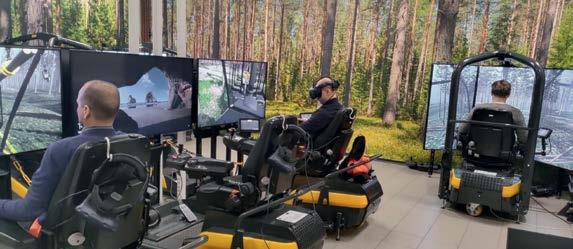
Through the MESOT project, the Lapland Education Centre (REDU) has made significant investments in simulator training. “Students have given positive feedback on the use of simulators as a learning environment, and we have used simulators actively. According to teachers, students have been better prepared when they have operated forest machines in real-life conditions at our logging site,” says project manager Raija Palokangas.
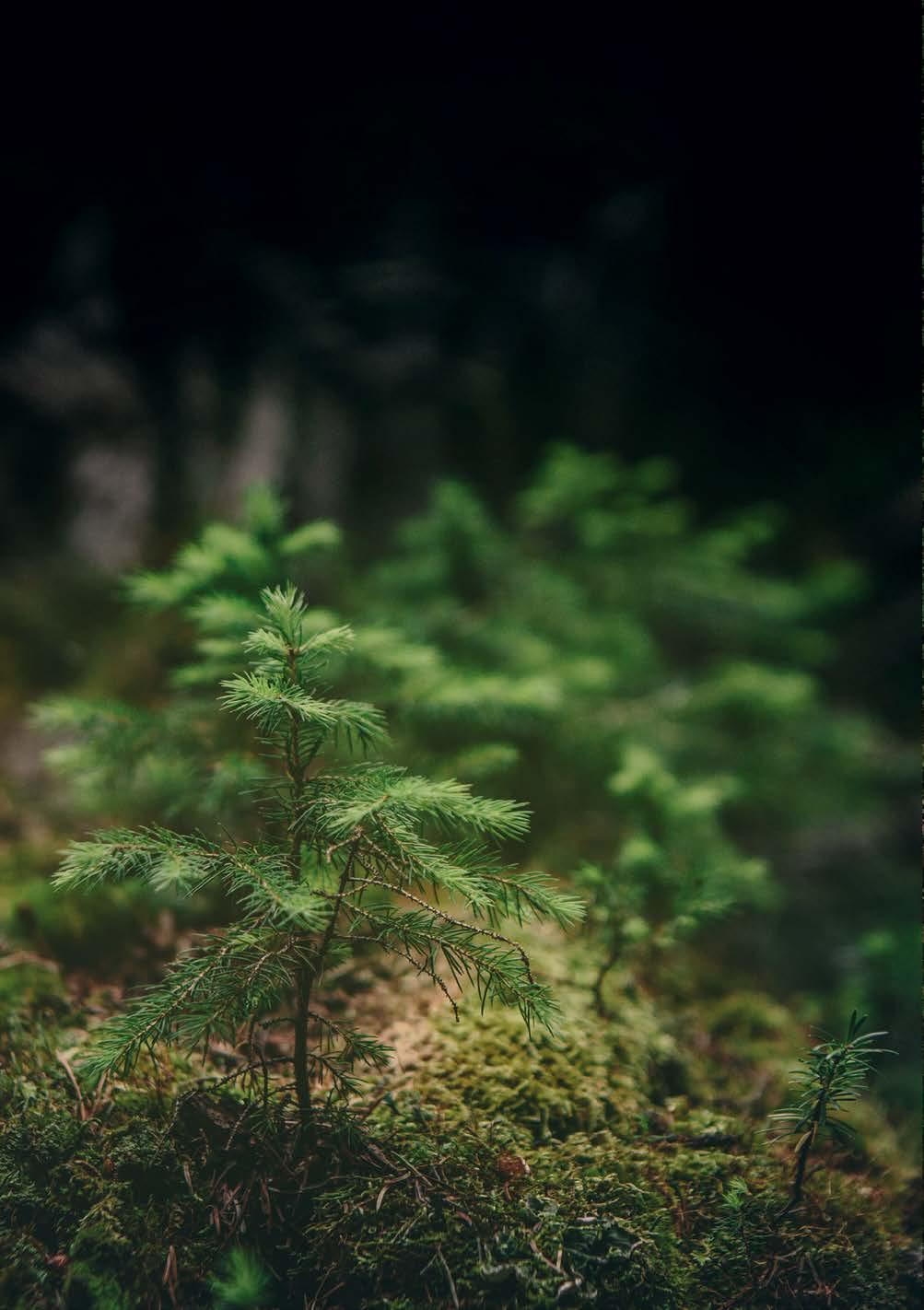
By eliminating overlaps and intermediate stages, the CTL machine chain is effective. The automated optimisation of the raw material maximises yield and minimises waste.
The high operating rate of machines ensures operations around the year. Compared to competitive harvesting methods, CTL stands out with its reliability.
Flexible CTL machines are at home in challenging conditions and excel at all sites, ranging from thinning to regeneration felling – regardless of the weather, season, or terrain. Sturdy machines operate safely even in difficult terrain.
Unlike other mechanical harvesting methods, CTL enables responsible and high-quality forestry through selective thinning. Forests are kept healthy through well-executed thinning, which increases the amount of carbon dioxide they absorb.